
views
Sanding and Priming the Boards
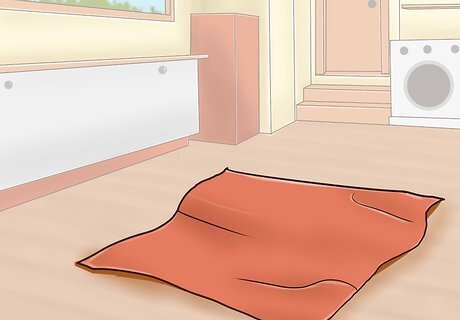
Set up your work area. Choose a well-ventilated space to paint the cornhole boards to prevent the buildup of paint fumes. Paint the boards outside or use an indoor room that has windows or doors you can open. Lay down drop cloths on a flat work surface to prevent the paint from making a mess. For example, if you work in your garage, keep the garage door open and lay drop cloths directly on the garage floor or a work bench.
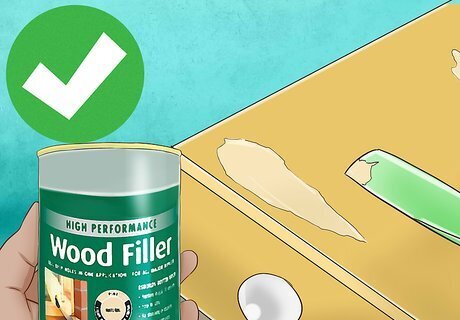
Fill any holes with wood filler. Check your cornhole boards for small holes or knots in the wood. Dip a putty knife into a container of wood filler so you have just a little bit on the end. Push the putty knife against the holes to fill them with the wood filler. Run the putty knife over the wood to smooth out the filler. Let the wood filler dry according to the manufacturer's instructions. Most manufacturers recommend letting the filler dry for about 8 hours.
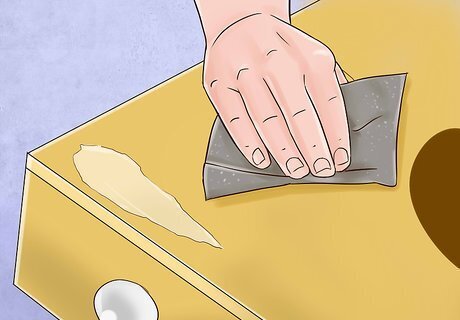
Smooth the boards using sandpaper. Sanding wood before painting is a must. Choose a medium grit piece of sandpaper or sanding block with a range of 60 to 100. Rub it over the plain boards to smooth over any bumps or dried wood filler. It will improve the surface of the boards so the primer and paint go on easier. If you prefer, you can use an electric sander to smooth the boards down.
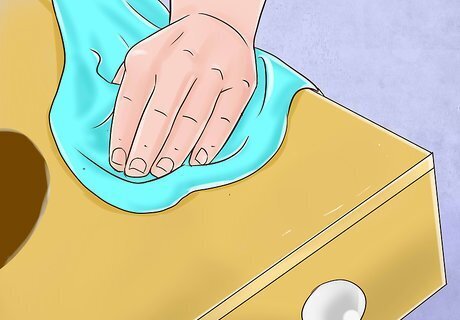
Wipe off the boards with a smooth cloth. Run a clean cloth or rag under clean water and wring it out. Rub the damp cloth over the boards to remove any dust from sanding the boards. Let the boards dry completely before you prime them.
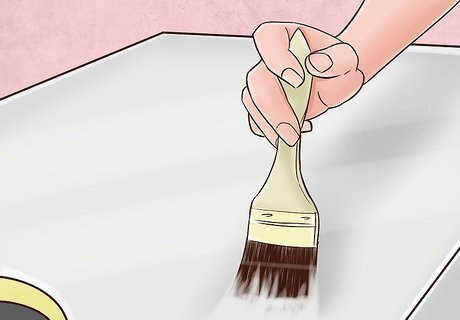
Apply a primer to the boards. Choose a white oil-based primer to use on the cornhole boards. Open the primer and use a paint stirrer to briefly mix the primer. Dip your brush into the primer or pour some into a paint tray so you can use a roller. Use the brush or roller to apply a thin layer of primer over both cornhole boards. Let the primer dry for at least 1 hour or according to the manufacturer's instructions. Oil-based primer works best with wood because it will penetrate deep into the wood and dry harder than water-based primers. Primer is designed to bond the paint to the surface. Any bare surface that has never been painted needs to be primed.
Painting Base Layers
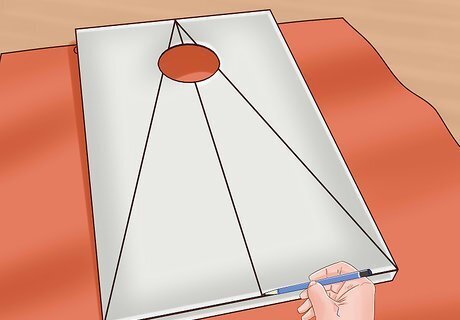
Draw the pattern on the boards. If you're creating a detailed pattern or design, take a pencil and draw the design directly on the primed boards. This will give you an outline for painting the boards. If you're making geometric designs (such as angles that point toward the hole) use a ruler or yardstick to draw straight lines.
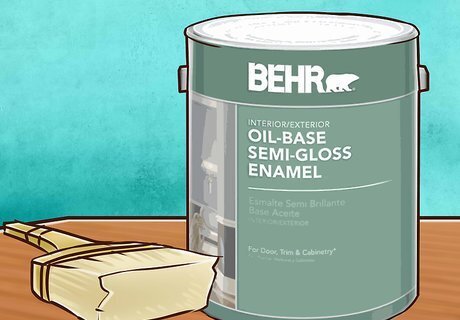
Choose a paint for the cornhole boards. Decide how glossy you want the painted boards to be. For a slight shine, choose a semigloss paint. For very shiny boards, pick a high gloss paint. Determine if you want to paint the boards a single color or if you want to paint each of them different colors. For example, you might paint 1 of the boards red and the other board blue. For detailed boards, use different colors or hues on each board.

Use a brush or roller to apply a layer of paint to the boards. Open the paint and use a paint stirrer to combine the pigment and binders in the paint. Either dip a paintbrush into the paint can and wipe the excess on the rim of the can or pour the paint into a paint tray. Dip a roller into the tray and roll it back a few times to load the roller with paint. Brush or roll a thin layer of paint evenly over the board.
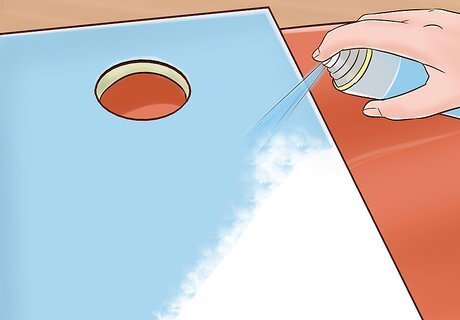
Consider using spray paint. If you dislike painting or want to quickly get an even layer of paint on the boards, buy spray paint. Wear a face mask when using the spray paint so you don't breathe in the fumes. Spray the paint slowly and evenly so it doesn't pool on the boards. To ensure that overspray from the spray paint won't get on any surrounding items, move things away from your work space and lay a drop cloth over the entire area.

Dry the boards for at least 2 hours before applying another coat of paint. Follow the manufacturer's drying instructions or wait at least 2 hours before you apply another coat of paint. You'll probably need to paint a total of 3 to 5 coats of paint, waiting the full 2 hours between each coat of paint. Darker colors of paint or higher quality paint will need fewer coats of paint.
Adding Embellishments
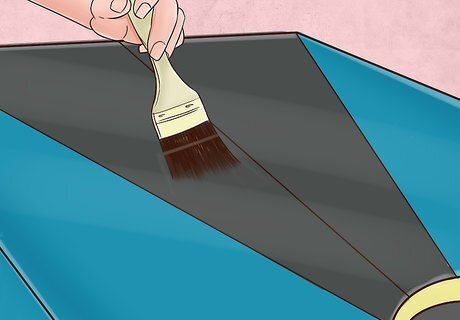
Add extra colors or details. If you drew a design on the cornhole board, dip your paintbrush into another color of paint and paint along the design. For a cornhole board set that will really stand out, consider painting each board different colors (such as the colors of your favorite sports teams).
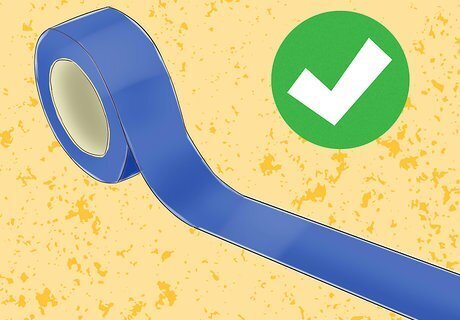
Use painter's tape to create crisp edges or lines. Consider laying down painter's tape if you want to paint the edges a different color or just want to paint straight lines across the boards. The painter's tape can keep the paint from one section from bleeding into the next area on the board. Painter's tape is designed to peel off easily without removing the paint underneath it.
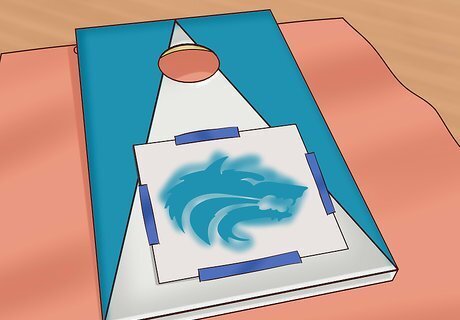
Use a stencil to make designs on the board. If you'd like to make a complicated design (such as one with lots of swirls or small curves) use a stencil to get the high level of detail. Lay the stencil on the cornhole board and tape it down with a few pieces of painter's tape. Paint or spray paint over the stencil and then lift the stencil away. Let the design dry completely.
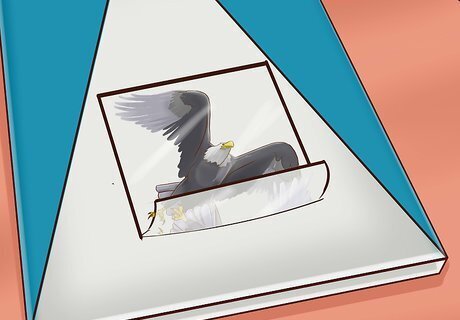
Apply decals or stickers. If you don't want to paint special designs by hand, but you want to make the boards look unique, place decals or stickers on them. To apply most decals or stickers, remove the backing and lay them on the painted boards. Rub over the decals or stickers to remove any air bubbles.
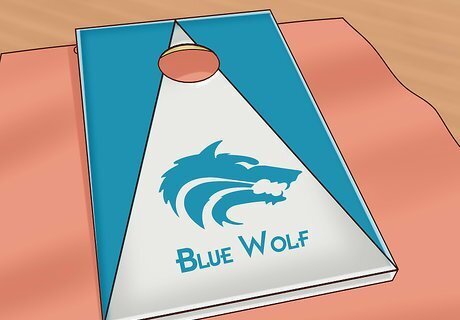
Include lettering on the boards. If you'd like paint letters or words on the boards, decide if you want to paint them by hand or use a stencil. To paint them by hand, draw a light guideline with a ruler to ensure that you paint the letters straight. If you'd rather not freehand the letters, lay down a stencil and paint over the letters you need. You could also apply letter decals to make your word. Have a variety of brush sizes around so you can make the letters different sizes, if necessary.

















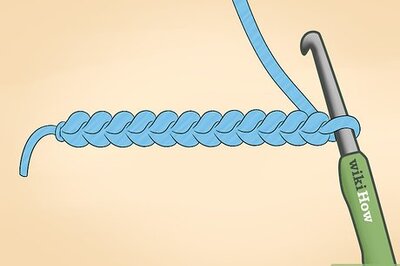
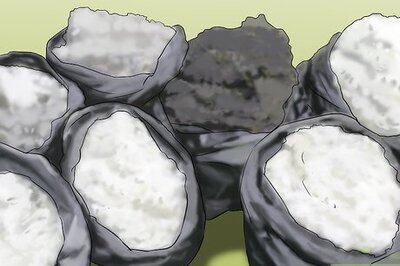
Comments
0 comment